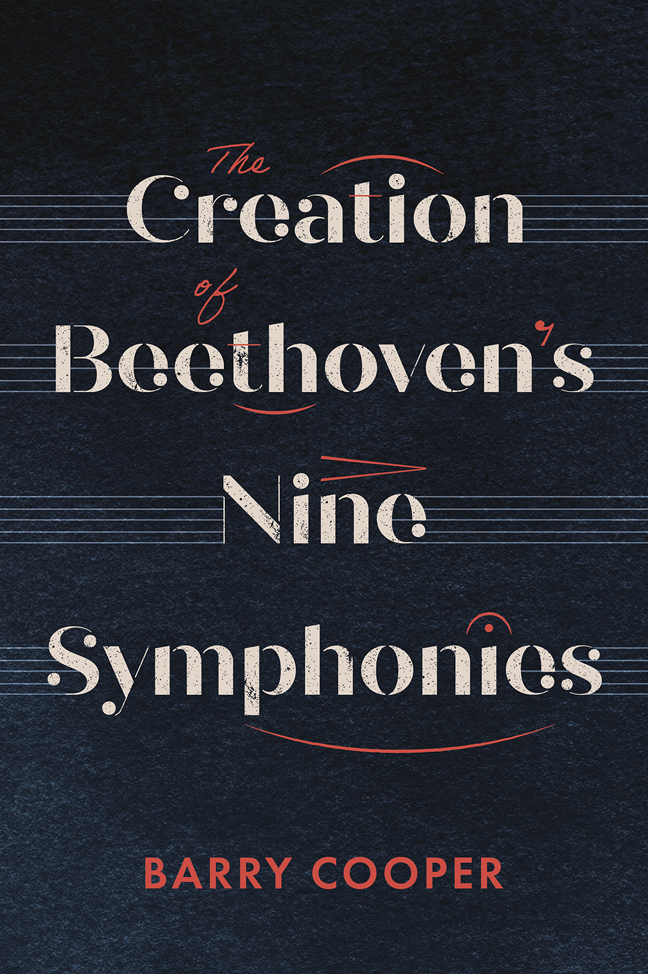Book contents
- Frontmatter
- Contents
- List of music examples
- List of tables and figures
- Preface and acknowledgements
- Abbreviations
- Introduction
- 1 The Long and Hazardous Road to the First Symphony, Op. 21
- 2 A Creation in Two Parts: The Second Symphony, Op. 36
- 3 Elevating the Genre: The Third Symphony (Eroica), Op. 55
- 4 The Oppersdorff Connection: The Fourth Symphony, Op. 60
- 5 Motivic Intensity: The Fifth Symphony, Op. 67
- 6 ‘More an Expression of Feeling than Painting’: The Sixth Symphony (Pastoral), Op. 68
- 7 ‘Great, Exalted’ Work: The Seventh Symphony, Op. 92
- 8 ‘Just Because it is Much Better’: The Eighth Symphony, Op. 93
- 9 The Philharmonic Connection: The Ninth Symphony, Op. 125
- 10 Epilogue
- Bibliography
- Index of Music Manuscripts
- Index of Beethoven’s Works
- General Index
10 - Epilogue
Published online by Cambridge University Press: 02 March 2024
- Frontmatter
- Contents
- List of music examples
- List of tables and figures
- Preface and acknowledgements
- Abbreviations
- Introduction
- 1 The Long and Hazardous Road to the First Symphony, Op. 21
- 2 A Creation in Two Parts: The Second Symphony, Op. 36
- 3 Elevating the Genre: The Third Symphony (Eroica), Op. 55
- 4 The Oppersdorff Connection: The Fourth Symphony, Op. 60
- 5 Motivic Intensity: The Fifth Symphony, Op. 67
- 6 ‘More an Expression of Feeling than Painting’: The Sixth Symphony (Pastoral), Op. 68
- 7 ‘Great, Exalted’ Work: The Seventh Symphony, Op. 92
- 8 ‘Just Because it is Much Better’: The Eighth Symphony, Op. 93
- 9 The Philharmonic Connection: The Ninth Symphony, Op. 125
- 10 Epilogue
- Bibliography
- Index of Music Manuscripts
- Index of Beethoven’s Works
- General Index
Summary
After the Ninth: A Tenth?
Although Beethoven’s Ninth Symphony proved to be his last, this was not his intention or expectation when he composed it. As noted in the previous chapter, he had been commissioned in 1817 to write two new symphonies, and while he was drafting the Ninth he noted down occasional ideas about its successor. The first known idea in 1818 was purely verbal and proposed adding voices to the finale of this second symphony, but this plan became absorbed into the Ninth, and it seems hardly probable that he would have wanted to use the idea in both new symphonies. In 1819 he implied to Ferdinand Ries that the two symphonies were at least partially written, saying that he would bring them with him to London the following winter. Then in July 1820, when Franz Xaver Gebauer visited Breslau (now Wrocław), he heard that Beethoven had two new symphonies in progress, and reported this in Beethoven’s conversation book the following month. The earliest known musical sketches for the work, however, are those noted previously that date from about October 1822, appearing near the end of Artaria 201 (pages 124–5) and on a separate bifolio now in Bonn. They show a slow introduction in E flat major leading to a fast section in C minor, plus ideas for three possible later movements. Beethoven considered incorporating both main themes from the first movement into the Ninth Symphony (see Chapter 9), as he had done with the plan for a vocal finale, but he quickly abandoned this idea, leaving them available for future development as the Tenth.
In the theme of the slow introduction the first five notes – even the first seven in some sketches – are identical to the Adagio theme in the Pathétique Sonata, apart from the key (see Example 9.9 above, which shows both versions of the theme at a time when they were being considered for the Ninth Symphony). Beethoven must have noticed this similarity, and may well have had some poetic reason for reusing this theme so conspicuously.
- Type
- Chapter
- Information
- The Creation of Beethoven's Nine Symphonies , pp. 269 - 280Publisher: Boydell & BrewerPrint publication year: 2024



